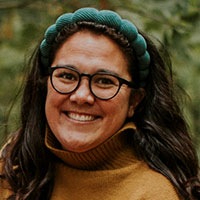Hello, Syllabication! A Key Focus for Older Students
Have you noticed one of your older students struggling with the pronunciation of longer, more complex words? It’s a common scenario easily recognized, right? The hesitant pauses. The concentrated looks. The attempts to navigate a word they have yet to orthographically map. You may have students who skip these words or rely on context as a strategy for correct identification. However, it is well known and supported by decades of science that these are ineffective strategies.
So, how do we equip students with more effective strategies and tools to accurately read more complex words? Hello, syllabication!
Mastering the skill of syllabication, which involves breaking words into smaller parts, is a game changer for word recognition. This is especially true for students in fifth grade and beyond, because they will encounter approximately 10,000 or more new words a year, with most of these words being multisyllabic (Archer et. al, 2003). When students build a strong foundation in syllabication, it has the potential to significantly accelerate the decoding process, making the journey smoother to fluent reading.
When introducing syllabication to students, there are two crucial aspects to keep in mind: Familiarity with syllable types and the need for a consistent, structured routine.
It is essential to familiarize learners with the six common syllable types: Closed, open, silent e, vowel team, r-controlled, and consonant-le. Understanding these types unveils patterns within words, empowering students to grasp pronunciation nuances. Accurate pronunciation is the key to committing words to memory and later being able to recall them. Feeling overwhelmed about where to start? Take a cue from syllabication itself and break it down into manageable chunks:
Begin with the two most prevalent syllable types, closed (short vowel spelled with one vowel letter, followed by a consonant such as sub/mit) and open (ends with a long vowel sound spelled with one vowel letter such as pro/gram). Starting with these two alone will cover 75 percent of syllables in words (Stanback, 1992).
When it comes to tackling longer words, consider incorporating a structured approach like the overt and covert strategy from the REWARDS® program by Dr. Anita Archer. This strategy involves: Circling prefixes and suffixes, underlining vowels, saying the parts of the word, saying the whole word, and making the word into a real word (pronunciation). This type of routine upholds the importance of looking at all parts of an unknown word instead of resorting to the mere temptation of taking wild guesses.
By making syllabication a key focus in educating older students, teachers provide them with essential tools and skills to be successful and confident readers. Instruction focused on syllabication and the diverse types of syllables isn’t merely a choice—it’s a necessity.
Learn more about Dr. Archer’s REWARDS program here. You may also enjoy this webinar with Dr. Archer, Learning is NOT a Spectator Sport: Increasing Student Engagement.



